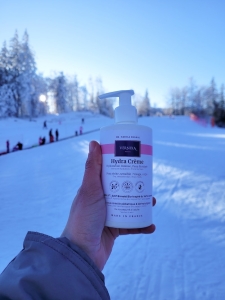Reading Time: mins
Suffering from cracks on the feet is not only uncomfortable, it can also affect your quality of life by making walking painful. Thanks to its rich moisturizing properties, shea butter is an effective solution for regenerating and nourishing the skin. This article offers a comprehensive guide to using shea butter to treat cracks and improve foot skin health.
Definition and symptoms : Cracks, painful fissures in the skin, occur mainly on the heels due to their exposure to continuous pressure. Your skin may develop deep cracks, itch or even bleed if cracks are not treated in time. Risk Factors : Several factors such as dry weather, poor foot care habits, or underlying health conditions like diabetes can trigger these cracks. Impact on Health : As well as causing pain, cracks can seriously limit mobility and increase the risk of infection if germs get into the cracks.
Nutrient Composition : Shea butter is exceptionally rich in saturated and unsaturated fatty acids, giving it moisturizing and protective properties. It is also loaded with vitamins A and E, which nourish the skin and improve its elasticity. Role in Skin Repair: Thanks to its components, shea butter can rapidly moisturize dry skin and promote the healing process of crack-damaged tissue. Clinical applications : Studies confirm that shea butter can indeed improve epidermal hydration and serve as a complementary treatment for patients suffering from skin diseases such as psoriasis and eczema.
Methodology : To effectively treat cracks with shea butter, we recommend applying it twice a day to clean, dry skin. A good practice is to apply shea butter after a bath or shower, when the skin is more receptive. Sensitive Case Management : Before starting any regular application, test a small portion of the balm for allergic reactions. Additional advice: To reinforce the butter's effect, maintain good hydration by drinking plenty of water and using a humidifier in dry environments.
Q1: How long does it take to see improvements?
With regular application, you can see an improvement in symptoms within a few weeks. Q2: Is shea butter safe for all skin types?
Shea butter is generally well tolerated, but people with very sensitive skin should start with small quantities. Q3: Can I use shea butter on my face?
Yes, it's a great facial moisturizer for dry skin, but avoid contact with the eyes. Q4: What are the best brands of shea butter?
Choose certified organic and purely natural products to ensure the quality and effectiveness of the shea butter you use.
All Rights Reserved | Tous Droits Réservés GTIN Compliance Hydra Lavant | GTIN Compliance Hydra Crème



